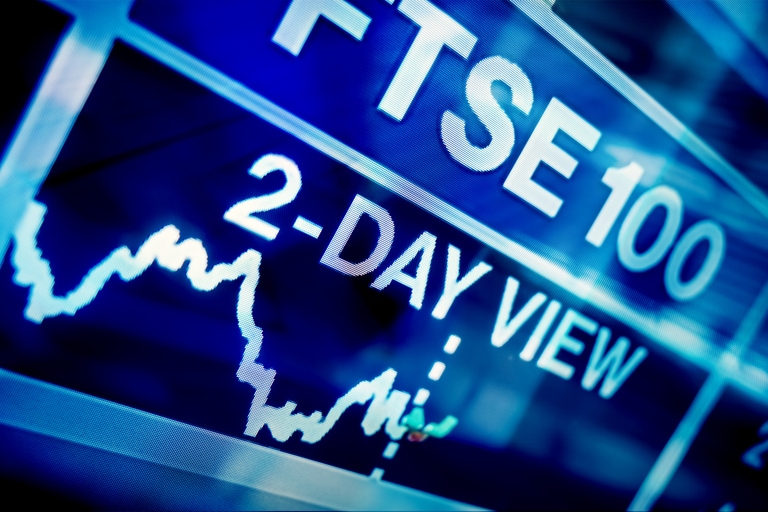This week has been an awful week for European markets, on course for their worst weekly performance since March, the DAX fell to its lowest levels in 3 months, while the FTSE100 slipped to within touching distance of its March lows.
US markets also fell sharply, although a late rebound from the lows, as bond yields retreated from their intraday peaks, should offer a respite to European markets this morning with a positive open.
Yesterday’s surge in yields to multiyear highs came over concerns that central banks seem prepared to risk crushing demand, and push economies into recession to get inflation under control, thus prompting investors to pare down their exposure to equity markets.
While the catalyst for yesterday’s sell off was the release of the Fed minutes, which showed a much greater caucus for further tightening than was thought, the direction of travel was given added momentum with the release of a red-hot ADP payrolls, and ISM services report, which showed the US labour market is still strong and likely to continue to do well.
This resilience, while good news for people looking for a job, does make it slightly more difficult for central bankers to squeeze inflation out of the economy, and this is what has got markets worried. Having misread the resilience of inflation on the way out of the Covid crisis, there is this real sense that central bankers could make the same mistake on this side of the crisis and overtighten as inflation comes down.
Yesterday’s ADP payrolls report was indeed a hot report, showing that 497k new jobs were added in June, however it was notable that the bulk of these positions were in lower paid services roles, while the prices paid component of the ISM services report slowed to the lowest in 3 years.
It is this resilience that is making the Federal Reserve’s job in trying to return inflation to its target rate much harder to achieve, although we could see headline CPI in June fall to 3% next week.
Today’s US non-farm payrolls report for June could well reinforce this optimism over the US economy, however there is also a fear that a decent jobs report could encourage the Federal Reserve to think the economy is more resilient than it actually is and raise rates more than they need to. That’s certainly what markets are pricing with the recent rise in yields.
The resilience of the jobs market has also been a little embarrassing for the economics profession, with the headline jobs report number, comfortably beating forecasts for the 14th month in succession, coming in at 339k in May. Will today follow a similar pattern?
Whatever happens today, a 25bps rate hike this month appears locked in, so it’s really a question of how many more we get after that.
That remains to be seen, so while we saw the Fed pause in June, this week’s minutes showed us that the decision, while unanimous, was only arrived at reluctantly, and with a commitment to raise rates by another 50bps by year end.
Yesterday’s June ADP and ISM data not only reinforced that expectation, but also got markets looking into pricing in another 25bps in September and in November, pushing the US 2-year yield to its highest level since 2007. That seems a little extreme given how much could change on the data front between now and then.
Nonetheless, markets are starting to price in higher rates for much longer as we saw long-term yields push higher with the US 5-year and 10-year yields rising sharply, as markets looked to price in a Fed terminal rate closer to 6%.
This comes across as a little premature, given how little we know about the passthrough effects of the rate rises that have already been implemented.
Today’s non-farm payrolls report is expected to see jobs growth slow from 339k to 235k, however after yesterday’s ADP number this estimate could be way too low. The Fed has already downgraded its unemployment forecast for this year to 4.1%. could this still be too high?
We do know that wages growth is slowing, unfortunately it may not be fast enough for the US central bank, while the unemployment rate is expected to fall to 3.6%, having jumped sharply to 3.7% in May, from 3.4% in April.
Average hourly earnings are expected to slow to 4.2% from 4.3% with the participation rate set to remain unchanged at 62.6%.
Live coverage of US payrolls at 1pm today https://www.cmcmarkets.com/en-gb/learn/events/non-farm-payrolls-live-coverage
EUR/USD – found support around the 1.0830/40 area yesterday, with resistance remaining at the 1.1000 area. A break below the lows last week opens the way for a potential move towards 1.0780.
GBP/USD – still range trading with support above the 50-day SMA at 1.2540, as well as trend line support from the March lows, bias remains higher for a move back to the 1.3000 area. Currently have resistance at 1.2770/80.
EUR/GBP – found support at the 0.8515/20 area and June lows yesterday. Also has resistance at the 0.8570/80 area. We also have resistance remains at the 50-day SMA which is now at 0.8655. Below 0.8500 targets 0.8460.
USD/JPY – remained tucked in above support at the 144.00 area yesterday. The lack of downside momentum does suggest we might turn higher. Resistance remains at 145.20. A break below 143.80 targets a move back to the 142.50 area. Above 145.20 opens up 147.50.
CMC Markets erbjuder sin tjänst som ”execution only”. Detta material (antingen uttryckt eller inte) är endast för allmän information och tar inte hänsyn till dina personliga omständigheter eller mål. Ingenting i detta material är (eller bör anses vara) finansiella, investeringar eller andra råd som beroende bör läggas på. Inget yttrande i materialet utgör en rekommendation från CMC Markets eller författaren om en viss investering, säkerhet, transaktion eller investeringsstrategi. Detta innehåll har inte skapats i enlighet med de regler som finns för oberoende investeringsrådgivning. Även om vi inte uttryckligen hindras från att handla innan vi har tillhandhållit detta innehåll försöker vi inte dra nytta av det innan det sprids.






